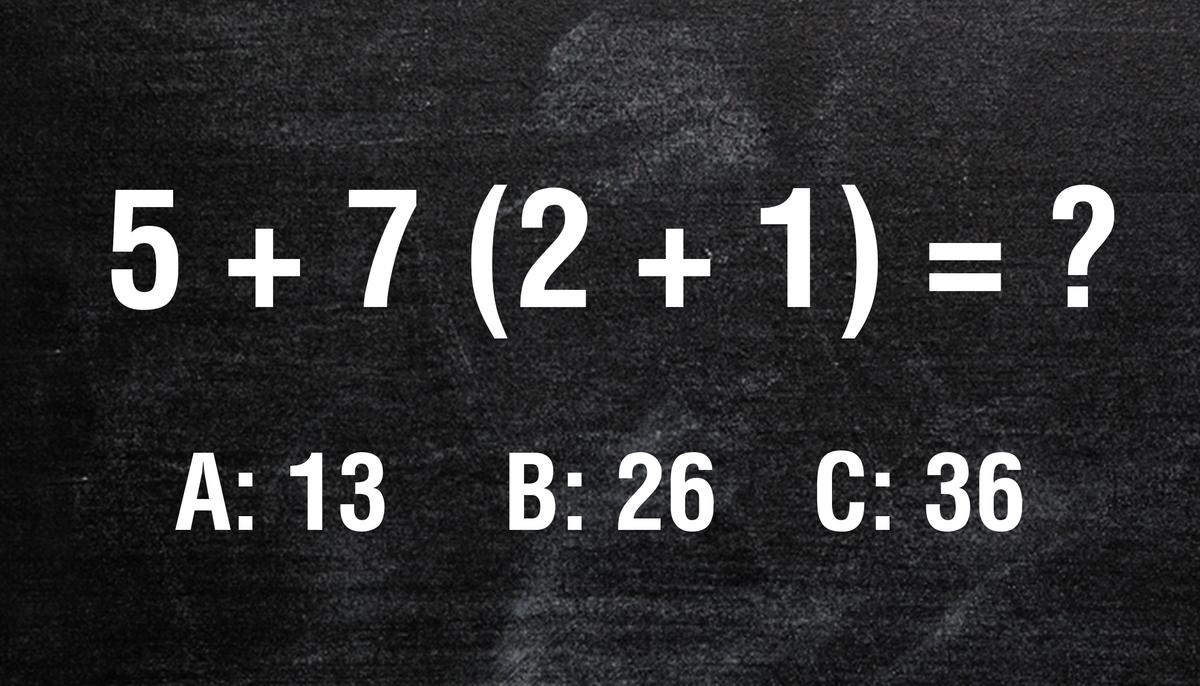Regardless of how you felt about math back in school, problem-solving is an excellent way to not only test yourself but also exercise the brain. This particular arithmetic test was actually designed for middle schoolers. See if you can solve it yourself before scrolling down to view the explanation and results.

The above math quiz is solvable by using the mnemonic device PEMDAS, an acronym made memorable by the phrase “Please Excuse My Own Sally,” but which actually stands for the order of solving mathematical operations, as follows:
“P” stands for “parentheses,” meaning you should always solve the problem in the parentheses first.
“E” is for “exponents,” meaning exponents are solved next.
“M” and “D” stand for “multiplication” and “division,” respectively, and are of the same order and solved from left to right.
“A” and “S” stand for “addition” and “subtraction,” respectively, and are also of the same order and also solved from left to right.
Now, have you managed to solve the above quiz? Let’s take a look at the correct way to approach the problem:

The first thing you need to do is solve the part inside the parenthesis (as per PEMDAS, parentheses are solved first right?), which is as follows: (2+1), which equals 3.
That leaves us with: 5 + 7 (3) = ?
As per PEMDAS, the next to solve is multiplication. Thus, 7 (3) equals 21.
And we are left with the last part of the question, addition, which is solved as follows:
5 + 21 = 26
And there you have it; the correct answer is B: 26.
Knowing how to solve basic math problems has an array of benefits for a person. Some say that everything in the world is mathematically connected. And knowing how that is the case can help one navigate the world better. For example, knowing math is crucial in telling time; if you are having a dinner party, it’s essential to know the necessary quantities of ingredients to ensure you make enough food for all your guests; the possible math applications in life are endless.






